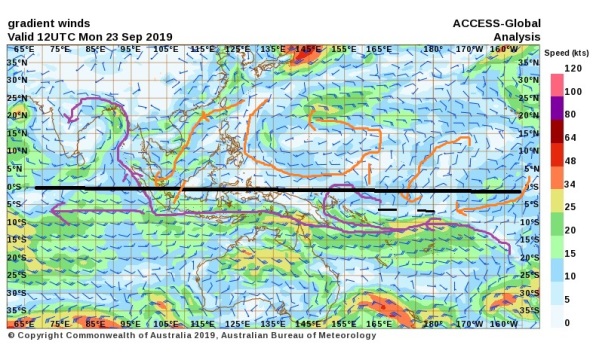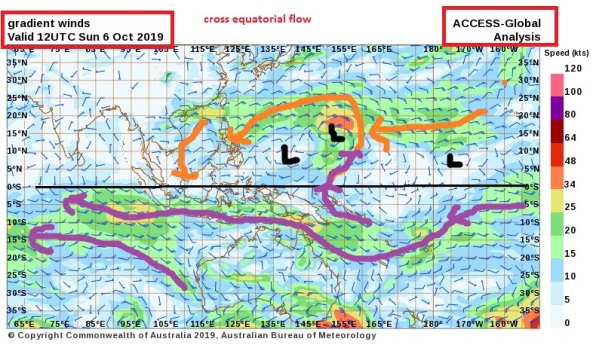Our planet’s climate may be more sensitive to increases in greenhouse gas than we realized, according to a new generation of global climate models being used for the next major assessment from the Intergovernmental Panel on Climate Change (IPCC). The findings—which run counter to a 40-year consensus—are a troubling sign that future warming and related impacts could be even worse than expected.
One of the new models, the second version of the Community Earth System Model (CESM2) from the National Center for Atmospheric Research (NCAR), saw a 35% increase in its equilibrium climate sensitivity (ECS), the rise in global temperature one might expect as the atmosphere adjusts to an instantaneous doubling of atmospheric carbon dioxide. Instead of the model’s previous ECS of 4°C (7.2°F), the CESM2 now shows an ECS of 5.3°C (9.5°F).
“It is imperative that the community work in a multi-model context to understand how plausible such a high ECS is,” said NCAR’s Andrew Gettelman and coauthors in a paper published last month in Geophysical Research Letters. They added: “What scares us is not that the CESM2 ECS is wrong…but that it might be right.”
At least eight of the global-scale models used by IPCC are showing upward trends in climate sensitivity, according to climate researcher Joëlle Gergis, an IPCC lead author and a scientific advisor to Australia’s Climate Council. Gergis wrote about the disconcerting trends in an August column for the Australian website The Monthly.
Researchers are now evaluating the models to see whether the higher ECS values are model artifacts or correctly depict a more dire prognosis.
“The model runs aren’t all available yet, but when many of the most advanced models in the world are independently reproducing the same disturbing results, it’s hard not to worry,” said Gergis.
A potential upending of a four-decade consensus
The IPCC issues comprehensive climate assessments every few years, along with interim reports on special topics in between. The IPCC’s Sixth Assessment Report (AR6) will be written over the next several years and released in 2021-22, based on papers being published through the end of 2019.
Back in 1979, a landmark U.S. climate study informally called the Charney Report estimated that the planet’s equilibrium climate sensitivity was between 1.5°C and 4.5°C. Each of the IPCC’s five major assessments since 1990 has largely agreed with this conclusion, although a few individual models have gone outside the range.
 |
| Figure 1. The consensus range of equilibrium climate sensitivity (ECS) from each of the IPCC’s five assessment reports released since 2000. Model assessment is still under way for the sixth report, due in 2021-22. Also shown are ECS values for each of the models contributed by the National Center for Atmospheric Research (NCAR) since the third IPCC report in 2001, as well as the value for the NCAR Community Earth System Model, version 2 (CESM2), which is being used in the next IPCC assessment. Image credit: Values drawn from archived IPCC asssessments. Note: This image has been updated to add the CESM1 value and correct the CESM2 value. |
“It does indeed look like many of the latest models will have ECS values higher than the IPCC ‘likely range’ of 1.5-4.5°C,” said Peter Cox (University of Exeter) in an email. “It seems that the new models with high ECS have more low-level cloud that tends to burn off under climate change, producing an amplifying feedback on warming.”
Cox is lead author of a 2018 study in Nature that examined temperature variability around long-term warming. The study concluded that the odds of ECS going outside the long-accepted range of 1.5-4.5°C were very small. “It is worth noting that observational constraints from both the temperature trend and temperature variability still suggest ECS of around 3°C,” said Cox. “So climate science has a conundrum to solve here.”
Clouds in the picture
Cloud-related effects have long been one of the biggest question marks in projecting future climate change, apart from uncertainties in future greenhouse emissions that hinge on human behavior. Low clouds—especially marine stratocumulus, which cover huge swaths of tropical and subtropical ocean—are especially crucial, as they tend to cool the climate by reflecting large amounts of sunlight.
 |
| Figure 2. Instruments aboard NASA’s CERES satellite analyze Earth’s total radiation budget and provide cloud property estimates that enable scientists to assess clouds’ roles in radiative fluxes from the surface to the top of the atmosphere. Image credit: NASA. |
The recent concerns about low-level clouds have been reinforced by ongoing work at NASA drawing on data from the CERES satellite program (Clouds and the Earth’s Radiant Energy System). Measuring the amount of energy entering and leaving the top of Earth’s atmosphere, CERES data shows that net energy in the atmosphere and oceans has climbed steadily with the increase of human-produced greenhouse gases—including both during and after the so-called “hiatus” in global temperature from about 2000 to 2013, when the oceans took up extra energy.
After 2013, the eastern Pacific saw a major drop in low cloud cover, global air temperatures spiked, and “there was a huge increase in sea surface temperatures,” said CERES principal investigator Norman Loeb, who outlined the changes in a 2018 paper.
Loeb is now analyzing how well the models for the upcoming IPCC report—with the higher sensitivities in place—can reproduce cloud cover and air temperature during and after the hiatus, given sea surface temperature. He discussed initial results last month at the 27th IUGG General Assembly (International Union of Geodesy and Geophysics), held in Montreal.
According to Loeb, “some of the models do really darn well” in depicting the cloud changes of the past two decades. He cautions: “I don’t know how far you can extrapolate this. There’s a danger in saying ‘you take the current record and the models nail it, therefore they have the climate sensitivity right.’ I’m cautious about making that leap, but it’s intriguing that they are nailing that post-hiatus difference.”
 |
| Figure 3. Differences in sea surface temperatures (left) and in CERES/MODIS-observed energy reflected from low clouds at the top of the atmosphere (right) between the so-called “hiatus” period of dampened surface air temperature increase (defined here as July 2000 – June 2014) and the subsequent period of amplified air temperature increase (July 2014 – June 2017). The post-hiatus period saw a dramatic increase in surface temperature across much of the eastern Pacific, together with a marked decrease in low-level cloud cover. Image credit: Courtesy Norman Loeb. |
A 2019 study in Nature Geoscience that used a fine-scale cloud dynamic model found that marine stratocumulus could be depleted in large amounts if carbon dioxide levels were to reach about four times their current values, possibly triggering up to 8°C in additional global warming. See the post from last May by Dr. Jeff Masters on this paper.
Clouds and pollutants
The new NCAR model is based on tests of nearly 300 model configurations, with a focus on how well the models simulated pre-industrial climate and how well they reproduced the main global temperature trends of the last century. These trends include warming from 1920 to 1940, a period of roughly steady global temperature with regional cooling in the mid-20th century, and a more sustained global warming since the late 20th century.
The model also took into account new estimates of aerosol emissions (soot and other particles and droplets). These estimates were designed to be employed by all of the latest IPCC model configurations. Aerosol pollution tends to cool the climate overall, both by blocking sunlight directly and by serving as nuclei for clouds that block sunlight more effectively.
The new data on aerosol emissions led to a stronger cooling effect in the NCAR model than previous versions. However, the stronger aerosol-related cooling also led to an unrealistic portrayal of 20th century climate. When the model was reconfigured in response, it produced a more accurate reproduction of 20th- and 21st-century climate, including cloud behavior—but with a higher ECS, which pointed to a more ominous portrayal of future change.
If the higher ECS in the new models turns out to be on the right track, “it’s really bad news,” said Gettelman. “It means we are going to be on the warm end of projections, with larger impacts for any given emissions trajectory.”
A durable index
The ECS allows for apples-to-apples comparison between the bare-bones climate models of decades ago and the far more sophisticated versions now in place. The ECS calculations begin with an instant doubling of carbon dioxide, whereas in our actual atmosphere, carbon dioxide is increasing gradually rather than all at once. The warming produced by the end of a more gradual doubling of CO2 rise is called transient climate sensitivity (TCS). “While TCS may be a better metric for comparison to observations and estimating near-term climate response…ECS has a long history as a convenient metric of future climate change,” said the authors in their GRL paper.
The amount of carbon dioxide in the atmosphere has increased by about 45% during the rapid industrialization of the last 150 years. Since regular measurements began atop Mauna Loa, Hawaii, CO2 concentrations have increased from about 315 parts per million in 1957 to around 410 ppm today. Fossil fuel burning and other human activities generate more than 35 billion tons of airborne CO2 a year, about half of which stays in the atmosphere for more than a century.
Although other human-produced greenhouse gases warm the planet—methane molecules, in particular, are very powerful warming agents—CO2 is expected to account for most of the human-produced warming over the next few decades and beyond, as it remains in the atmosphere much longer than methane and is much more prevalent.















